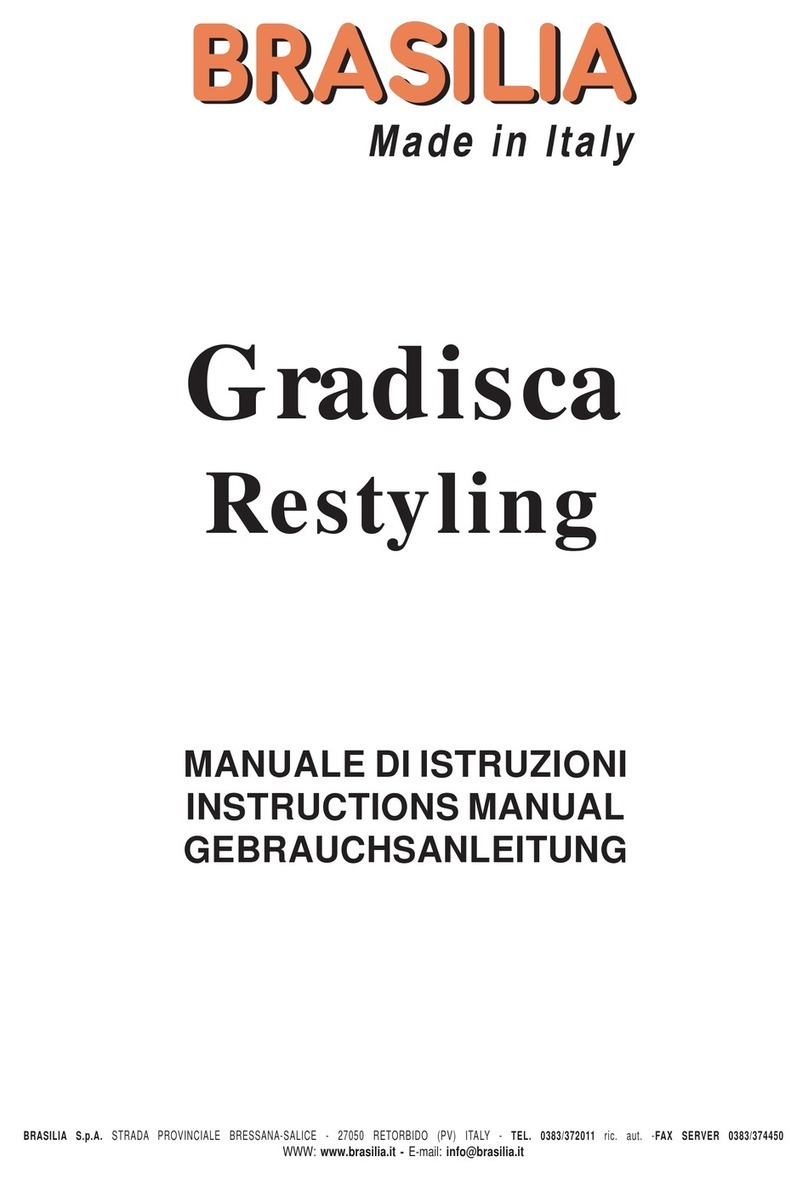Rev 0 - 09-2008 ENGLISH / 1
1. GENERAL INSTRUCTIONS
BRASILIA S.p.A. has taken every possible measure to ensure that the equipment operates safely and efciently.
BRASILIA equipment comes with built-in safety devices to protect both users and authorised technicians.
• Read this manual carefully before installing the machine, starting it up and using it. Not doing so could cause
damage to the equipment, poor performance by the machine and health risks or personal injury.
• This manual should be treated as a part of the machine itself and should always be available to the user
and/or maintenance technician. If it gets lost, or you need further information, please get in touch with your
local retailer or with the manufacturer. The manual reects the state of the art at this time and any updates
will not imply that it was inadequate. The manufacturer reserves the right to change the manual with no
obligation to update earlier editions, except in unusual circumstances. The Figures in this manual are purely
explanatory and might not look the same as all the models referred to in the instructions.
You must not:
•operate the machine without complying with the safety regulations in force in the country where it is
installed;
• operate the machine without an earth connection. Not complying with this instruction could lead to electric
shocks;
• replace or remove the safety stickers and the specications plate afxed directly to the machine and its
packaging with a view to proper and safe installation and use;
• touch groups or nozzles while the machine is working. When handling the wands only touch them by the
grips. The beverages dispensed and some parts of the machine are hot and could cause burns or scalds;
• remove or tamper with any part of the machine; do NOT make arbitrary changes. Get in touch with the
authorised technician and specialist for your area;
• pull the line cord to unplug the electricity supply;
• allow children or unskilled staff to use the machine;
• expose the machine to the elements (sun, rain etc.);
• leave the machine in places where the ambient temperature is 0°C or lower because the water in the boiler
might freeze and cause damage;
• install the machine in places where jets of water that could reach the machine are used;
• operate the machine if any door or panel is not properly closed;
• stick spoons, forks or other utensils into the internal parts of the machine;
• operate the machine without water;
• to pour hot or boiling water into the machine;
•obstruct the air vents: you must leave a space of at least 10 cm between the machine and any walls and at
least 5 cm free on both sides, to allow proper ventilation.
For the machine to work properly you should use:
• only ground coffee, or, for models that have a special lter holder, cartridges.
• only cold tap water suitably softened (~7 French degrees).
• only original Brasilia S.p.A. spare parts
If these instructions are not followed, the guarantee does not apply and the manufacturer or the
maintenance technician declines all responsibility.
BRASILIA S.p.A. and the maintenance technician decline all responsibility in the following cases:
• if the machine is used in a manner other than as described in this manual;
• if the safety and maintenance instructions are not followed;
• if original BRASILIA spare parts are not used;







































